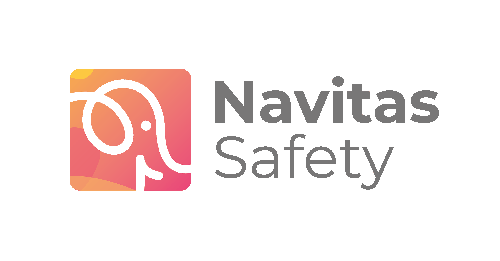Building and maintaining a reliable food safety management system has never been so important for hospitality businesses. Why’s that? Because food safety is on everyone’s lips today! The pandemic has indeed urged foodservice businesses to build resilience and adaptability in order to keep everyone safe. Easier said than done though, right? 😉 So whether you are developing a new food safety management system or just reviewing yours, here’s our recommended 8 core steps. Take it as a guide on how to operate a food safety management system that will keep everyone safe: your staff, customers and brand. Whilst it can be a time-consuming and daunting task, it’s essential for your business and will help you achieve the highest safety standards. Enjoy!
About this blog:
What is a food safety management system and why does it matter so much?
A systemic approach to managing food safety
Food safety is essential to protect people from foodborne illnesses. Also nicknamed as FSMS, a food safety management system entails all policies and workflows to guarantee flawless food safety from start to finish. So, just visualise it as a systemic approach aiming at:
- identifying potential food safety hazards;
- controlling such hazards;
- and eliminating them throughout the entire food process.
Basically, it’s set up to ensure there is a continuous system of behaviours and checks for the safe handling, preparation and storage of food. And why is it so important? It will keep everyone safe at your premises and give you total peace of mind.
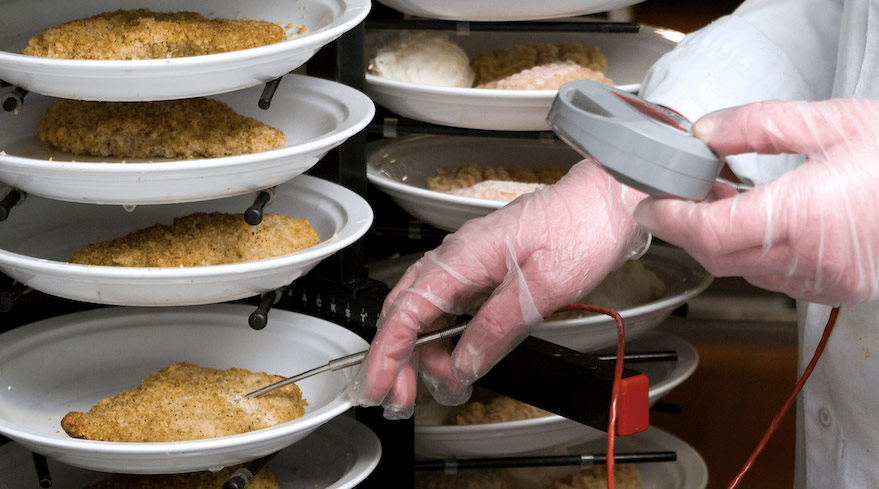
It's a legal requirement from food safety authorities
Any business dealing with food (supplier, caterer, seller) is legally required to have a food safety management system in place. But how you do it, that’s completely up to you! However, building a Hazard Analysis Critical Control Point (HACCP) is the typical way of bringing to life your food safety management system.
Keep in mind that having such a system in place is key for your EHO audits. Indeed, it will act as evidence of reliable food safety management practices. Your Environmental Health Officer will check that the way you manage food safety matches your HACCP so don’t miss out! Also, this will impact your final food hygiene rating. So if your goal is 5 stars, read along! 😉
It will contribute to keep everyone safe - including your brand
A robust FSMS will back your food business by ensuring clear and continuous food hygiene practices. It allows you to visualise whether everything is safe and on track and spot any hazards or bottlenecks. Ensuring that every step of your food safety management system is covered in writing or via digital records is essential to protect your business. That way, if any incident happens (e.g. allergen crisis, food poisoning), your brand will be protected. So what would be the consequences of a bad (or no) food safety management system then?
- A bad food hygiene rating;
- Heavy fines;
- Closure of premises;
- And even bad press and customer loss.
Let’s be honest, you don’t want that. Read along as we’re about to dig into our 8-step guide! 😌
What are the key 8 steps to build your food safety management system?
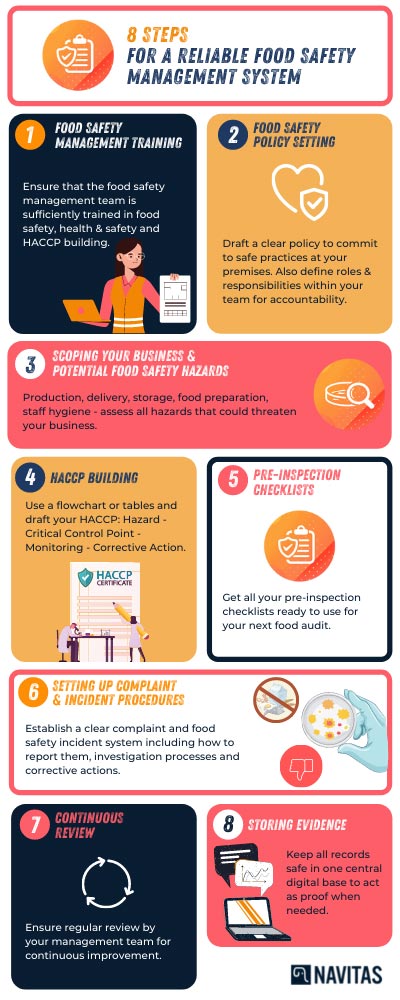
First, food safety management training
Firstly, training. Developing a food safety management system requires knowledge and expertise. So ensure that the food safety management team is sufficiently trained in the following areas:
- Food safety;
- Health and safety;
- And HACCP building.
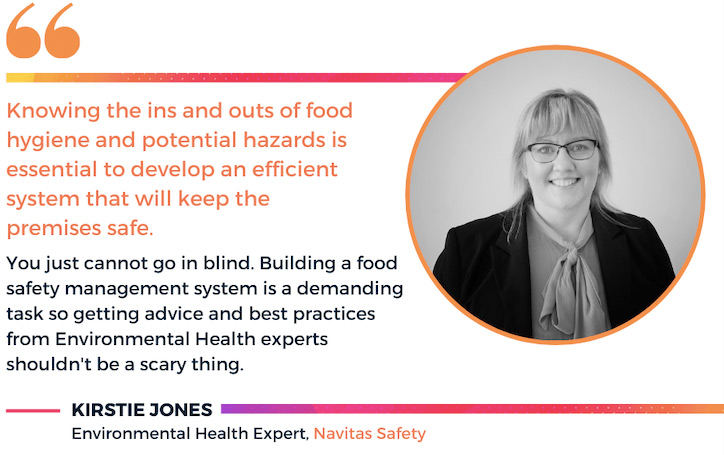
🎉 Here’s some good news. Navitas Safety make food safety training fun and interactive whilst taking your team through the serious bits. Curious? 🎓 Find out more about our Academy here. Did you know we have FREE Level 2 food hygiene courses? Explore here!
Second, policy setting to show food safety commitment
Managing food safety also starts with clear and robust policy. So before getting into drafting and implementing your FSMS, work on your food safety policy. Slightly confused? The goal for you here is to put into writing your business’ commitment to keep the premises safe and to serve food that is safe to eat.
This second step is also where you should define roles and responsibilities for food safety management and supervision. Indeed, having the right accountability set up early in the process is key for the rest of your food safety management system.
Not sure where to start? 😥 We have a bunch of passionate specialists available to help you keep your people safe 🧡 … and they can also help with bespoke HACCP & Policy review!
Third, scoping your business and understanding potential food safety hazards
Understand the size and needs of your foodservice business
Having a scope of your business processes and hazards is essential for proper food safety management. So have a good understanding of:
- The size of your business;
- Location (single-site or multiple, geographical location);
- Type of business (restaurant, hotel, hospital caterer, coffeeshop, school);
- As well as your customers.
In other words, we advise you to (re)assess your own business. Indeed, the food safety management system of a care home will differ a lot from a multi-site, global food manufacturer which will require much more detail, cross-checks and training.
Then, identify all the food hazards that could threaten your business
Again, this varies a lot from one foodservice business to another. So explore the various hazards that will need watertight control to ensure 5* food safety at your premises. We have grouped them into 8 different hazard / risk categories:
- Production & Delivery: supplier reliability and traceability, suppliers' own HACCP, labelling, storage, pest control, temperature control during transport;
- Storage: pest control (rats, ants, cockroaches that could bring bacteria), leakages of raw foods on dry foods, temperature control, cross-contamination;
- Preparation & Cooking: cross-contamination with cooking equipment, raw foods contamination, allergen traceability, reheating/defrosting, temperature control, staff training;
- Service: temperature control and transport (especially for takeaway), cleanliness and proper labelling of displayed foods, staff personal hygiene (gloves, aprons, hair nets);
- Health & Safety: structure of the premises to cook, storage availability, equipment maintenance;
- Fire: fire risk management, sufficient training;
- Waste Management: pest control, cross-contamination risks;
- Cleaning: cleaning routines, staff training for cleaning checks, surfaces, equipment (reusable cloths vs. disposable ones, chopping boards).
Fourth, building your HACCP with flowcharts or tables
Your Hazard Analysis Critical Control Point (HACCP) will come as a handy tool to visualise food safety processes and mitigate risks. After identifying the potential food hazards (step 3 above), look into the control points to curb such risks. This is what you should follow when building your HACCP flowchart or table! Ideally you want to do one flowchart for each hazard category (e.g. one for food delivery and supply, one for food preparation).
💡 Still blurry? Here’s what to follow for your HACCP:

Here’s an example for you:
Cross-contamination risk during storage (Hazard) → Separation of raw foods from other foods with proper labelling (Critical Control Point) → Check at every food pick-up, delivery and storage (Monitoring) → Colour-coded labels and dedicated fridges for raw food storage (Corrective Action).
🤔 Feeling a bit rusty with basic food safety tips? We’ve got you covered! Here’s a list that we made to celebrate World Food Safety Day. Have a look at our best food safety hacks!
Fifth, preparing your pre-inspection checklist
In order to strengthen your food safety management system, consider having handy pre-inspection checklists. These will help you quickly visualise if you’re all on track before your EHO visits the premises. Staff training, hygiene practices, structure of the premises – tick all the boxes for total peace of mind before your next food audit.
🎁 Not sure where to start? No time to draft your pre-inspection checklist? We’ve come up with a FREE downloadable checklist just for you! ↘️ Download now and be inspection-ready.
Sixth, setting up food safety complaint and incident procedures
In addition, having clear complaint and food safety incident procedures is a key element to your food safety management system. It should cover:
- How you record complaints & incidents (e.g. undercooked food, allergen incidents, badly defrosted food, presence of non-edible item in food, such as plastic);
- How you manage them (mitigation);
- Which corrective actions are taken (better allergen labelling, routine sampling, water assessment, staff refresher training).
💧Have you considered routine food and water sampling? It’s useful to proactively manage all pathogens and contamination risks in your kitchen – such as legionella. Also, make sure your incident investigation process is clear and you have all the evidence and records easily accessible to protect your brand. This is specifically important as a hotel or care home.
Seventh, reviewing your food safety management system for continual improvement
Managing food safety is a continual improvement process. As new laws regularly come into effect (e.g. Natasha’s Law on allergen labelling in October 2021), systematic review is key. Therefore, your food safety management team should review it on a regular basis. Our specialists here at Navitas Safety would advise on frequent team check-ups with dates set in a shared calendar. Or, you can opt for Navitas Compliance calendar – a very convenient, no-hassle Personal Assistant 😉
Eight, storing evidence and food safety documentation
Finally, ensure all your evidence and food safety records are securely stored and quickly accessible. Indeed, in case of an incident or EHO visit, you will be expected to disclose such documents. The quicker, the better!

Many foodservice businesses fail their EHO inspection or get awarded poor food hygiene ratings due to a lack of documentation. Therefore, you can reinforce your FSMS and increase your chances of a 5* food hygiene rating with digital food safety. All records, evidence and certificates are stored in one single database with quick access. Digital food safety is a key ally for building your food safety management system. Plus, it makes your life easier!
How can Navitas support you to develop a strong food safety management system?
Building and reviewing your food safety management system can be a really time-consuming task. Navitas Safety acts as an extension of your team and can support you in different ways. Our goal is to make your life much easier by saving you time and effort.
🌟 The win for you? You’ve got more time to focus on what you’re passionate about and can relax! Here’s how we can help:
- Fun and bespoke online training;
- A helping hand for your food safety audits with our friendly team of Environmental Health experts;
- Support with all things labelling: allergen & calorie to stay compliant with the new laws;
- Building & Review of your HACCP and policy;
- Digital Food Safety to remove all paperwork and save you an average of 20 hours of work each month;
- Free resources and guides to help you if you’re starting from scratch! 😌
Got you curious? We’d love to hear about your business and needs! 🧡
Did you know that modernising food safety can help lower your carbon footprint?
